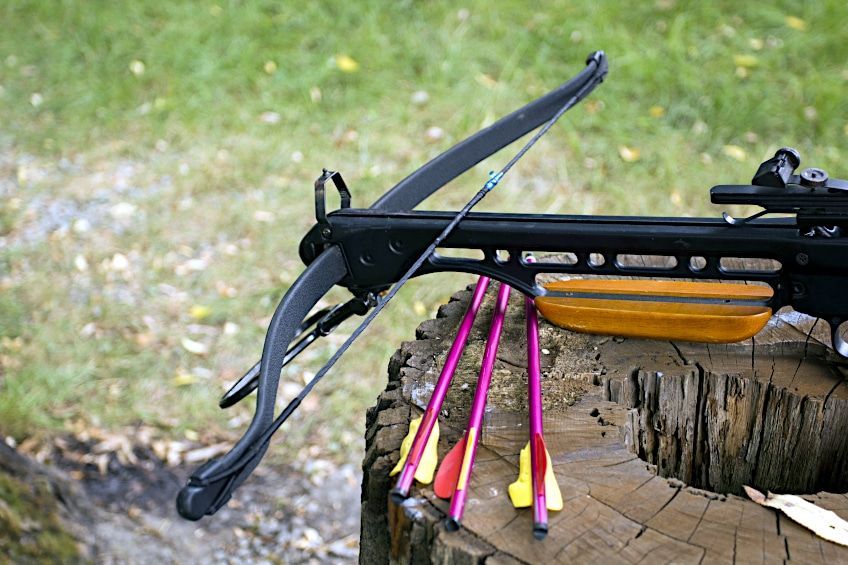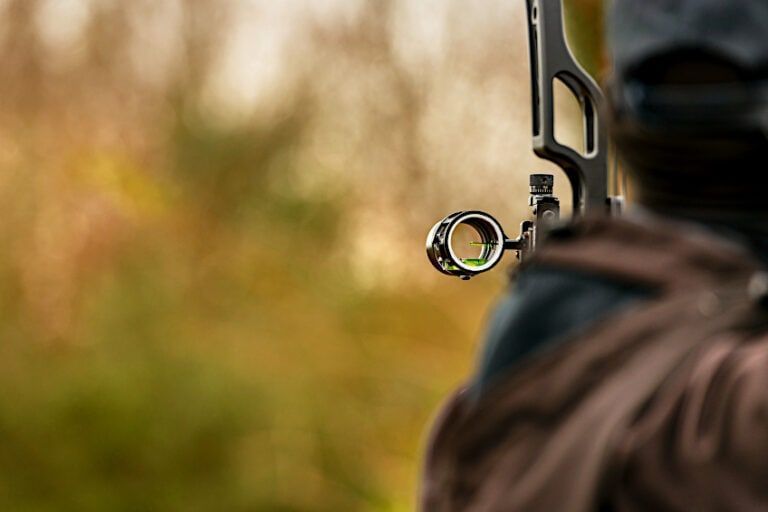What Sets A CrossBow Apart from Other Bows?
Introduction
In the world of archery and hunting, crossbows stand out as a fascinating blend of tradition and modern engineering. With their unique design and mechanism, they offer a distinct experience compared to traditional bows.
Whether you’re a seasoned archer or a curious newcomer, understanding what sets crossbows apart is crucial. This guide delves into the specifics, showcasing why crossbows are a popular choice for many.
Here, in this article we present the intriguing world of crossbows, highlighting their features, advantages, and what truly makes them unique in the archery realm.
Understanding Crossbow

A crossbow is a type of bow that consists of a horizontal limb assembly mounted on a stock or frame, designed to shoot projectiles, known as bolts or quarrels. Crossbows have a rich history, dating back to ancient China, and have evolved significantly over the centuries. Today, they are used for sports, hunting, and recreational shooting, appealing to a wide range of enthusiasts. Crossbow comes in different sizes, and there are some of the best budget crossbows available.
Unlike traditional bows, which require the user to hold the string back manually, crossbows use a locking mechanism to maintain the draw, allowing for more controlled and precise shots. It combines the aiming and shooting mechanics of guns with the ancient art of archery.
What sets a CrossBow Apart?
Crossbows distinguish themselves through their unique loading and firing mechanisms, which allow for greater precision without the physical strain required by traditional bows. Their design enables consistent accuracy and power, setting them apart in the world of archery.
1. Loading and Firing System
Crossbows utilize a mechanical action to load and fire, significantly reducing the effort and skill required for operation. This mechanism involves cocking the bow, usually with a crank or lever, which locks the string in place.
Once loaded, the crossbow can maintain its draw without continuous effort from the user, allowing for careful aim. The release of the bolt is triggered by a simple press of a button or pull of a lever, providing a user-friendly experience. This system not only simplifies the shooting process but also allows for rapid readiness and firing.
2. Stable Shooting Platform
The design of a crossbow offers a stable shooting platform, thanks to its stock and trigger mechanism, similar to that of a rifle. This stability is enhanced by the ability to rest the crossbow on a surface or use bipods, reducing user fatigue and improving shot accuracy.
The physical structure of the crossbow, including its balanced weight distribution and ergonomic grips, further contributes to its steadiness, making precise shots easier to achieve for both beginners and experienced archers.
Moreover, due to its heavier weight as compared to other bows, it seems to appear stable. In the meantime, some crossbows come equipped with model shooting sticks or bipods to increase stability and provide users with an even more stable platform on which to aim.
3. Draw weight, Tension and Power
Crossbows feature a higher tension and strength compared to traditional bows, translating into greater power and velocity of the launched bolts. The mechanical advantage of the crossbow allows for the propulsion of bolts at higher speeds, delivering more kinetic energy upon impact.
The draw weight of a crossbow is managed mechanically, enabling the shooter to handle weights that would be challenging to draw manually. Additionally, this power does not compromise the user’s comfort, as the mechanical loading system absorbs the strain.
4. Accuracy and Range
The accuracy and range of crossbows are superior due to their mechanical operation and stable shooting platform. Crossbows can achieve remarkable precision over long distances, outperforming traditional bows in consistency.
The use of sights, scopes, and other aiming aids further enhances this accuracy, allowing for precise targeting that is less affected by the archer’s physical strength or skill level. This makes crossbows particularly effective for hunting and target shooting, where precision is paramount.
5. Bolt Vs Arrow Ammunition
Crossbows use bolts or quarrels, shorter and thicker than arrows, designed for high impact and penetration. These projectiles are specifically engineered for crossbows, taking into account their higher draw weight and power.
Bolts come in various materials and designs, each optimized for different uses such as hunting or target practice. The choice of bolt affects the crossbow’s performance, including its accuracy, range, and the type of game it can hunt.
6. Legal Consideration and Regulations
The use of crossbows is subject to specific legal considerations and regulations that vary by region. Unlike traditional bows, crossbows are often regulated more strictly, with laws governing their use for hunting, sport, and recreational shooting.
Potential crossbow users must familiarize themselves with local regulations, including permits, hunting seasons, and restrictions on use. These laws reflect the crossbow’s capabilities and the need for responsible ownership and usage.
Cross Bow Vs Traditional Bow (Long Bow and Recurve Bow)
Crossbows differ from traditional bows, such as longbows and recurve bows, in several key aspects. The mechanical operation of crossbows allows for greater draw weights without physical strain, leading to higher power and longer-range shots. Their design offers enhanced stability and accuracy, facilitated by the use of aiming devices.
While traditional bows require significant physical strength and practice to master, crossbows provide a more accessible entry point to archery, with a shorter learning curve. However, the experience of using a traditional bow, with its hands-on approach and physical demands, offers a different kind of satisfaction and skill development that some archers prefer.
Difference Between CrossBow and Compound Bow
Crossbows and compound bows represent two popular choices in archery, each with its unique features and benefits. While both are designed for precision and power, they cater to different preferences and uses. Let’s explore the key differences between these two types of bows in a comparative table.
| Feature | Crossbow | Compound Bow |
| Mechanism | Utilizes a trigger and mechanical hold to keep the bow cocked. | Uses cams and pulleys to reduce draw weight at full draw. |
| Shooting Position | Typically shot from a rested position due to its structure. | Held vertically and requires strength to draw and hold. |
| Ease of Use | Easier for beginners due to the lack of need to hold draw weight. | Requires more physical strength and skill to use effectively. |
| Aiming Aids | Can be equipped with scopes for enhanced accuracy. | Often uses peep sights and can be harder to master for precision. |
| Portability | Generally heavier and bulkier, it is less portable. | Lighter and more compact, easier to carry over long distances. |
| Draw Weight | Higher draw weights that are mechanically managed. | Adjustable draw weights, but limited by the archer’s strength. |
| The rate of the Fire | Slower is due to the loading mechanism. | Faster, as it can be shot more quickly after drawing. |
Advantages of Crossbow over Other Bows
The crossbow has significant advantages over other bows. Presenting you advantages of the crossbow.
1. Enhanced Accuracy
The crossbow’s design allows for the use of aiming aids like scopes, significantly enhancing accuracy. Its stable shooting platform allows shooters to aim more precisely, making it ideal for both hunting and target shooting.
The ability to hold the crossbow steady on a rest further improves shot consistency, offering an advantage in situations where precision is critical.
2. Ease of Learning
For beginners, the crossbow stands out as an accessible entry point into archery. Its operation does not require the physical strength to draw and hold the string, making it easier to focus on learning aiming and shooting techniques. This ease of learning makes the crossbow an attractive option for those new to the sport.
3. Versatility in Use
Crossbows are versatile tools that can be used in a variety of settings, from competitive shooting to hunting. Their power and accuracy make them suitable for taking down games of various sizes, while the ability to use scopes allows for effective use in different environmental conditions.
4. Extended Hunting Opportunities
In some regions, crossbow hunters enjoy longer seasons and more opportunities compared to traditional bow hunters. This extended season is a significant advantage for hunters looking to spend more time in the field.
5. Safety Features
Modern crossbows come with built-in safety features, such as auto-engaging safety locks and anti-dry fire mechanisms. These features help prevent accidental discharge and injury, making crossbows a safer option for both experienced archers and beginners.
Frequently Asked Questions
1. Is the crossbow faster than other bows?
Crossbows can shoot bolts at high speeds, comparable to or sometimes exceeding that of compound bows. However, their rate of fire is generally slower due to the loading time.
2. What kind of crossbow accuracy can you anticipate?
With proper aiming aids and practice, crossbows can offer remarkable accuracy and are capable of precise shots at distances greater than traditional bows.
3. Are crossbows more powerful than other bows?
Yes, due to their mechanical design, crossbows can achieve higher draw weights, resulting in more powerful shots and greater penetration.
4. What is the general cost of a crossbow?
Crossbows can vary widely in price, from affordable entry-level models to high-end versions with advanced features. Prices typically range from a few hundred to over a thousand dollars.
5. Can we customize a crossbow?
Yes, many crossbows allow for customization. Scopes, grips, and quivers of crossbows can be tailored. Moreover, bolts and broadheads can be selected based on specific needs.
Conclusion
Crossbows offer a unique blend of power, precision, and ease of use that sets them apart from other types of bows. Whether you’re a seasoned hunter or a newcomer to archery, understanding the advantages and capabilities of crossbows can help you make an informed decision. With their advanced features and versatility, crossbows are a compelling choice for anyone looking to enhance their archery experience.







